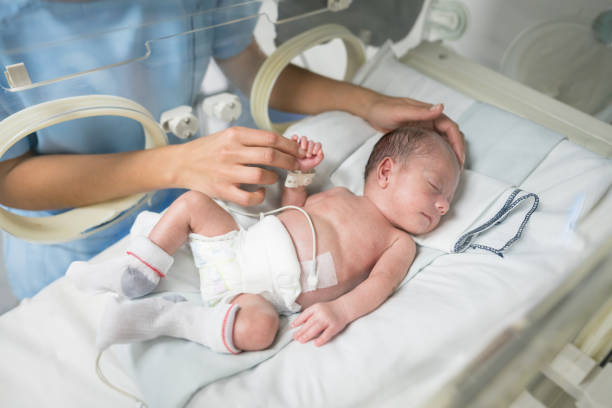Bacteria infection in children: what you need to know
 pixabay
pixabayHere in Nigeria more especially some various hospitals which I have been to. I can vividly tell you that most times of childrens ailment is mainly due to blood bacteria infection (sepsis).
Well, I am not surprised seeing it that way reason being that a lot of things can be considered as a factor behind the increase rate at which children falls sick.
Do you know that our immune system can be one of the major contributing factor why we often fall sick. Today a lot of bacterias are everywhere devastating human on daily bases. The food we eat, the things we drink and the places we go are mainly filled with bacterias. Aside that bacteria can also be gotten from the air we breathe.
If you look at it very well you will understand that there are higher chances of getting infected with bacteria infection.
A lot of things can be reasons why it seems most children are suffering from bacteria related diseases. Well, I can tell you that children's immune system are not strong enough to combat any bacteria infection. Secondly, some gets infected from already contaminated birth canal of the mother during pregnancy.
Bacteria infections are many but in children there are actually some specific kinds of bacteria infections which they comes down with. Theses includes
Listeriosis, streptococcal infection, and gastro intestinal infection.
listeriosis
This is a serious infection caused by a bacteria called Listeria monocytogenes.
It is estimated that about 1600 people suffers from this disease after eating a contaminated food.
This bacteria infection can be gotten by children through an infected mother. Pregnant mother who gets this disease has higher chances of having miscarriage or delivering a still child.
Symptoms includes fever, vomiting, loss of appetite and breathing problem.
streptococcal infection
This is also a bacteria infection that are being transferred from the mother to the child during delivery. This bacteria can be very severe and lead to some various diseases like meningitis, pneumonia and sepsis.
This disease can be caused by a bacterium known as Streptococcus pyogenes. And can be fatal if not treated properly. The symptoms includes fever, irritability, vomiting and swollen gland on the neck.
gastro intestinal infection
This is an invasion of bacteria into a babies digestive tract leading to diarrhoea and other related complications.
Gastroenteritis can also be caused by viral or parasitic infection, which results to the body electrolytes imbalance.
Do you know that about 3 to 5 billion people suffers from gastroenteritis every single year in the world in general. It is mostly common in children under the age of 5 years.
In US, it is recorded that gastroenteritis is responsible for hospital visit of about 1.5 million people, 200,000 hospital admissions and 300 death
Like I said earlier, viruses are also among the major causes of gastroenteritis in children, these viruses includes norovirus and rotavirus.
Norovirus
has become the most common cause of gastroenteritis in all age groups, including children, in the United States since the introduction of rotavirus vaccines. This virus commonly affects children between 6 months and 18 months of age. Infections occur year-round, but 80% occur from November to April. Most people are infected after swallowing contaminated food or water. Because norovirus is highly contagious, infection can easily be spread from person to person. Norovirus causes most cases of gastroenteritis epidemics that occur on cruise ships and in nursing homes
Looking at the above explanation it is obvious that norovirus is one of the major factor that can lead to bacteria infections. This is also applicable to rotavirus
Rotavirus
is the most common cause of severe, dehydrating diarrhea among infants and children worldwide. The frequency has decreased since the introduction of rotavirus vaccines. It usually affects infants and toddlers 3 to 15 months of age. Rotavirus is highly contagious. Most infections are spread by fecal-oral transmission. Infected infants may spread the infection to adults. In temperate climates, rotavirus infections are most common in the winter months and are less common in the summer. In tropical climates, they can occur year-round
how we can diagnose bacteria infection in children
Bacteria infections can be discovered in so many ways using blood and urine sample of the child.
In urinalysis, this is a method where a strip is being used to identify if a particular child has infection or not. This is done by dipping the strip inside the child's urine and check out for positive colour change in nitrite.
A positive changes in the colour of nitrite signifies that the child is suffering from a bacteria infection.
Also, the urine and blood of the baby can be cultured to identify the actual bacteria involved. This is done by using a culture plate to culture a sample after which sensitivity is done to determine the right drugs for the bacteria infection.
conclusion
Bacteria infection is a very deadly disease that needed an adequate attention in children. The rate where by this infection is multiplying in children is really getting out of hand.
Though most of this infection is as a result of the mother having infection before delivery. This can be passed through the placenta down to the new born baby. Treating infection before being pregnant can as well help in preventing your child from being infected
S. agalactiae (Group B) is more common when it comes to deliveries. The labs do screen for Group A for mothers, but the occurrence of B is much higher.
The occurrence of B is much higher, I agree with you
Thanks for your contribution to the STEMsocial community. Feel free to join us on discord to get to know the rest of us!
Please consider delegating to the @stemsocial account (85% of the curation rewards are returned).
You may also include @stemsocial as a beneficiary of the rewards of this post to get a stronger support.